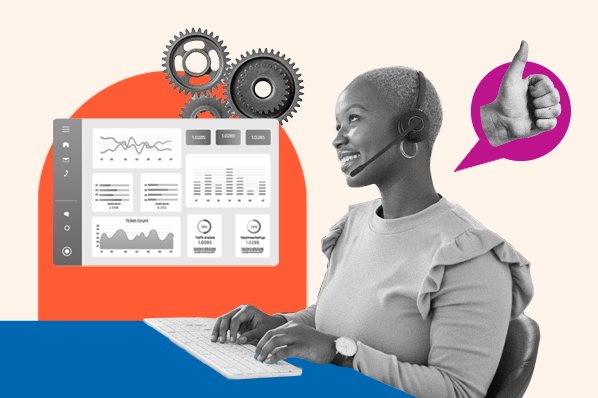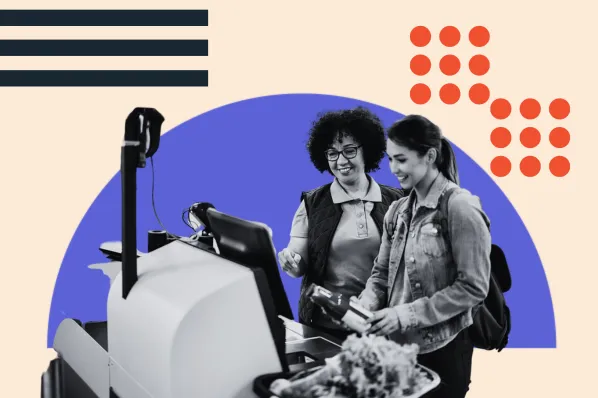When I first told friends and family I had been given the opportunity to create a role entitled Customer Empathy Specialist, they joked that I would be leading drum circles and trust falls at work. I’m proud to report that, a few months into the role, that hasn't been my experience yet.

I created this role within Toast, a restaurant technology company, in January after over a year of being on the customer front lines as a Restaurant Success Manager for local accounts (our branding of an account manager). I observed a need for greater compassion, emotional intelligence (EQ), and understanding of our customers and their unique worlds as we were scaling.
In this article, we’ll break down the “empathy” buzzword and demonstrate how to make customer empathy actionable in your workplace. I’ll also outline how I have been tackling the task of fostering increased IQ and (arguably more essential) EQ for our customers and their unique environments.
How to Gauge Your Company’s Customer Empathy
When I first stepped into this role, it was apparent that we needed a temperature check on the collective internal literacy level of our customers and their restaurant contexts. Gauging this collective IQ and restaurant experience was crucial to avoid making assumptions about what we already knew (and didn’t know) about our customers’ worlds.
We crafted an internal survey asking each employee if they had previously worked in a restaurant and nuances about that experience (years of experience, recency, role). We also included qualitative free response questions about what they missed most from their time in the restaurant industry, why they left, and what they feel they are empowered to do at Toast to continue to support the industry.
At Toast, we make it a point to consider restaurant experience as a key factor in the hiring selection process. The fact that this survey now lives on as part of our new hire onboarding experience holds us accountable to work toward raising the bar on our collective restaurant experience as an employee base (what we are referring to now as our “restaurant savviness” metric).
I’m proud to report that over the last four months since the initial survey launch, we have maintained the same percentage of Toast employees who have worked in a restaurant, and actually increased the percentage of employees who actively work in restaurant environments alongside their role at Toast.
After analyzing the results of that survey and sharing them back internally, I set out to tackle the 36% of Toast employees that lacked previous restaurant experience to draw upon when serving our customers (designing around them, marketing to them, creating educational content to support them, or supporting them on the front lines). One initiative we are piloting is a “lunch and learn” series, where we will have Toast employees with extensive restaurant experience (ranging from server, bartender, and general manager, all the way up to executive chef and owner) share stories from their restaurant days and field questions from employees who lack these experiences.
Why is Customer Empathy So Important?
If empathy is the ability to feel what it’s like to spend a day in someone else’s shoes, then it's imperative for companies to ensure their employees have done exactly that.
When I previously worked at a tech company, I was in a customer-facing role supporting digital marketing agencies. It was easy to connect to the customer’s lived reality since there was a lot of overlap in our daily experiences. In theory, we both sat behind a desk all day (or stood behind fancy standing desks), felt the neck and shoulder strain from hunching over a computer for hours, and went through the new first world rite of passage of needing to purchase a pair of blue light-blocking glasses from screen overuse.
I was able to empathize with this type of customer because there was so much common ground in our work environments and stressors. I could day-in and day-out viscerally experience what my customers were experiencing.
This is not the case when it comes to the Toast customer base. From the vantage point of sitting behind a desk 9-5, many of the realities of working in the restaurant industry are invisible to us. This rings especially true for the 36% who have never spent a day in a restaurant role and don’t have a visceral memory bank to draw from.
How to Build Customer Empathy
My primary objective in this role is to design enriching immersion experiences at scale, which can be a bit tricky to do without being intrusive to a customer restaurant and without a controlled restaurant environment of our own.
Currently, I’m working on building out a “Toast in the wild” interactive restaurant empathy training course that dives into both restaurant “IQ” and “EQ.” The in-person training half-day will culminate in a customer-led tour of a local restaurant, where Toast employees will get to see our product in its full context and practice what they just learned in regards to connecting with customers on a personal, human level rather than a tactical one. By designing the training as an experiential learning opportunity, the employee will get to take these sensory memories back to their desks to draw upon for future customer interactions.
In addition to the training course and group tour in the field, I am in the process of piloting a restaurant shadow shift program (referred to as a “stage” in the industry). While again this doesn’t necessarily scale well, shadowing a restaurant shift is possibly the most enriching experience someone who hasn’t worked in a restaurant can go through. We are in the process of partnering with a few local customers to make this happen and to build a stronger connection to the daily experience of our customer base.
What Are Your Company’s Customer Empathy Initiatives?
If you are looking to create customer empathy initiatives in your organization, my recommendation would be to start by gauging the internal understanding of your customers. From there, it’s all about creating visceral memories for your employees and ensuring you are providing frequent immersion opportunities for them to practice exercising both IQ, EQ, and empathy for the customer.
To learn more, read about empathy phrases customer service agents can use in their conversations.











